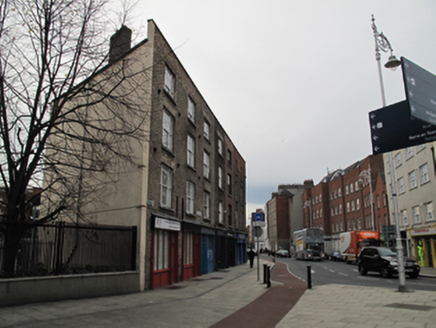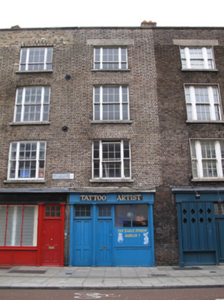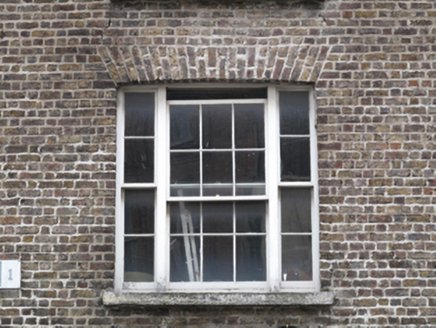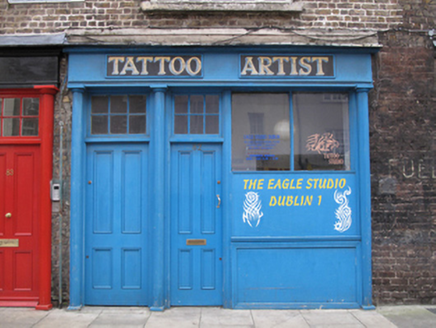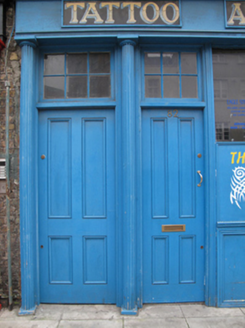Survey Data
Reg No
50010600
Rating
Regional
Categories of Special Interest
Architectural, Artistic
Original Use
House
Historical Use
Shop/retail outlet
In Use As
Shop/retail outlet
Date
1820 - 1825
Coordinates
315272, 234780
Date Recorded
02/12/2011
Date Updated
--/--/--
Description
Terraced single-bay four-storey house and commercial building, built 1823, with shopfront to ground floor. M-profile slate roof, hipped to north, having shared yellow brick chimneystacks, hidden behind rebuilt brown brick parapet wall having masonry coping. Brown brick walls laid in Flemish bond with recent flush pointing, remains of painted sign to ground floor. Gauged brick square-headed window openings having masonry sills, raised render reveals and timber tripartite sliding sash windows, six-over-three pane flanked by two-over-one sidelights to third floor, and six-over-six flanked by two-over-two sidelights to first and second floors. Rendered lintel to third floor window. Shopfront to ground floor comprising timber Doric columns on square plinth bases supporting timber entablature and moulded cornice. Square-headed window opening having bipartite fixed timber display window, timber fascia on timber sill and timber panelled stall riser, square-headed door openings with timber panelled doors and six-pane overlights to shop and to opening giving access to upper floors
Appraisal
The façade of this modest late Georgian building is enlivened by a fine timber shopfront, which adds artistic and historical interest, as few original shopfronts such as this survive in this area of Dublin. Timber tripartite windows to the upper floors add visual interest, enhancing the tall narrow façade. It forms part of a terrace of shops with residential space upstairs, laid out c.1823 by the Wide Streets Commissioners. The composition of this façade is replicated in the neighbouring buildings, creating a sense of uniformity and making a significant architectural and visual contribution to the streetscape. The buildings reflect the early, predominantly commercial, function of Capel Street, which was one of the primary thoroughfares of the city until the early part of the twentieth century.
